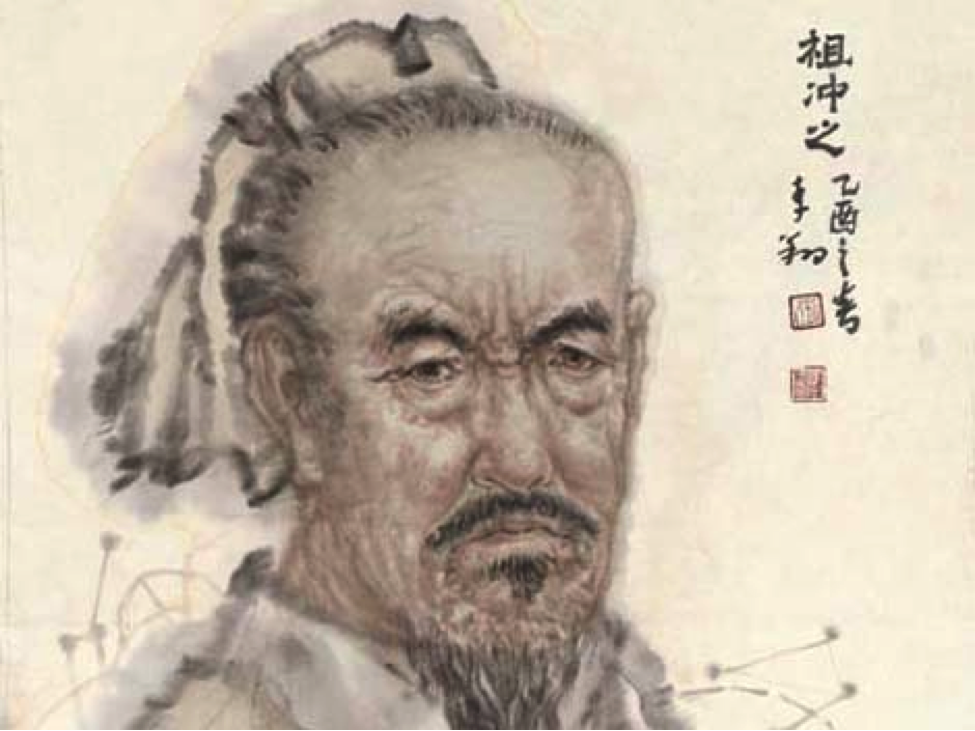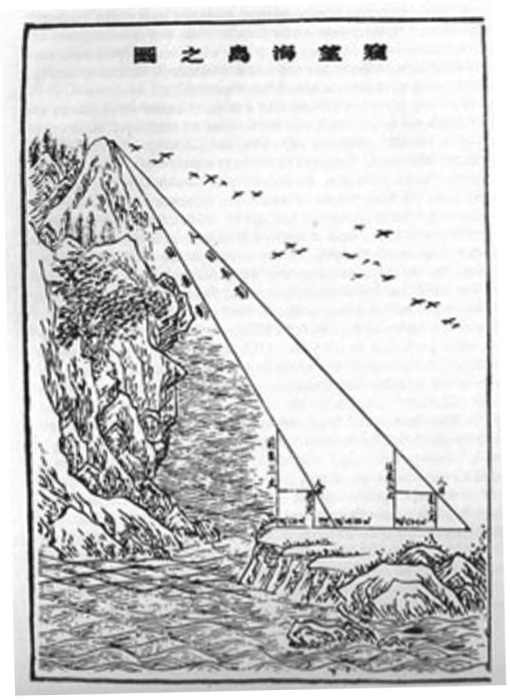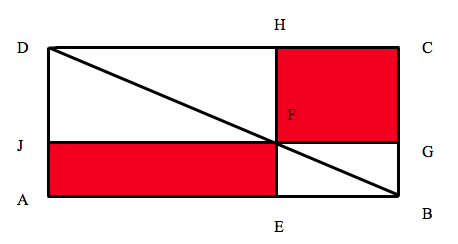Led Astray by a Right Triangle: Misconception, Epiphany, and Redemption - The Epiphany
The Epiphany
But yet my theory was just an hypothesis; I needed further verification. I pressed on, seeking out more Chinese problem solving situations involving right triangles. In the year 263, the scholar-official and greatest mathematician of ancient China, Liu Hui, of the Kingdom of Wei (220-280 CE), wrote a commentary on the Jiuzhang in which he supplied theoretical verifications for many of the solution procedures, corrected mistakes, and enriched the text with his own mathematical contributions.

Figure 7. Liu Hui wrote an extensive and important commentary on the Jiuzhang in 263 CE. (Source: Convergence Portrait Gallery)
Liu felt that the ninth chapter of the Jiuzhang was weak in its considerations of obtaining inaccessible distances and he extended it by adding nine new problems. (Note again that magic number nine.) All of these problems involved the use of two gnomons and were solved using a procedure called chong cha or “double differences.” Indeed, these problems were more complicated, but again, in my working of them, I recognized pairs of similar triangles from which sets of proportions could be developed and the answers obtained [11]. However, a nagging doubt began to arise: If the Chinese recognized the similarity of right triangles, why didn’t they generalize the concept of similarity to other geometric figures?

Figure 8. A technique for measuring the height of a mountainous sea island is depicted and explained in the Haidao suanjing [Sea Island Mathematical Manual].
At the beginning of the Tang Dynasty (618-906), Liu’s nine problems were separated from the Jiuzhang and published as an independent mathematical classic, the Haidao suanjing [Sea Island Mathematical Manual], so named because its first problem concerns the determination of distances involving a remote “sea island.” See Figure 8, above. Over the intervening centuries, the Haidao’s methods and techniques were followed and incorporated into other mathematical tracts with few questions asked.
The nineteenth century saw a resurgence of interest among Chinese mathematicians as to the mathematical traditions of their predecessors. The contents of the Haidao were examined and analyzed but mainly in regard to its principal solution technique, “double differences.” The first English language translation of the Haidao’s problems was published in 1912 by Yoshio Mikami, who considered only the first three problems [5]. A complete translation of the whole work into French was accomplished in 1932 by the Belgian sinologist-mathematician Louis van Hée [13]. In his commentary, van Hée concluded that the ancient Chinese mathematicians used the properties of similar triangles but only recognized similarity among right triangles. Since so many of their problems focused on surveying situations involving gnomon sightings and resulted in the development of right triangles, perhaps his conclusion was justified but it still seemed unlikely to me that an appreciation of geometric similarity would be so limited.
In my further analysis of the Sea Island problems, I became aware of a solution procedure that avoided any considerations of the concept of similarity. It involved a geometrical concept labeled “The In-and-Out Complementary Principle,” IOCP. The prevalence of this technique in traditional Chinese mathematical calculations has been traced and well documented by the contemporary Chinese academician Wu Wenjun [14]. Its basis can be best understood in reference to Figure 9.

Figure 9. Rectangles AF and FC have equal areas, according to the "In-and-Out Complementary Principle” (IOCP).
In the following discussion, I will designate rectangles by reference to their left-to-right ascending diagonals, thus the rectangle shown above in Figure 9 will be referred to as rectangle AC. Rectangle AC is bisected by diagonal BD. Let the horizontal line JG intersect the vertical line HE at point F on the diagonal. This construction partitions rectangle AC into six disjoint regions. In Figure 9, it can be seen that the triangles on opposite sides of the diagonal are congruent: \(\Delta DJF\cong\Delta FHD\) and \(\Delta EBF\cong\Delta GFB.\) Because BD bisects rectangle AC, the areas of the remaining rectangles, AF and FC, are also equal. Since in the methods of geometric-algebra employed by the Chinese, the area of a rectangle is considered a numerical product, several numerical relationships arise from the geometric situation, for example:
AE x EF = FG x GC AB x BG = EB x BC
JF : EB = DJ : FE AB : EB = DA : FE
Thus, it appears that in solving numerical problems involving right triangles, the traditional Chinese approach was to package the right triangles into rectangles where IOCP could be applied. Now, let me return to the two illustrative problems solved above and rework them using the IOCP.
Reconsidering Jiuzhang 9:17 in light of IOCP, the geometric situation depicted in Figure 4 is altered by extending the line segments ED and AB to meet at point I and constructing line segments from points D and B to intersect perpendicularly at point G. Extend line segment AC to intersect DG at point F and line segment EC to intersect BG at point H. See Figure 10.

Figure 10. Diagram for Jiuzhang 9:17, assuming the use of the In-and-Out Complementary Principle (IOCP)
Now consider rectangle DB, within which are contained rectangles EA and FH. The following relationships exist: IE x EC = CF x FG, thus CF = (IE x EC)/FG and, since CF = ED = x and FG = AB, then x = (IE x EC)/AB = (100)2/15 and x = 666 2/3.
Reworking Jiuzhang 9:23 in a similar fashion, I obtained the geometrical situation depicted in Figure 11, where the area of rectangle DC is equal to the area of rectangle CI.

Figure 11. Diagram for Jiuzhang 9:23, assuming the use of the In-and-Out Complementary Principle (IOCP)
Now KD x DB = JC x BA. Solving for JC, we have JC = (KD x DB)/BA and, substituting in the given values, JC = 53(95-7)/3 = 1554.666. Adding to this value the height of the tree, the height of the hill is obtained: EF = 1554.666 + 95 = 1649.6662.
All the right triangle problems of the Jiuzhang and all the problems of the Haidao can be solved using IOCP. Thus, I am now convinced that early Chinese mathematicians did not utilize similar triangles, per se, but rather similar rectangles. Whether the proportions developed and used in this situation resulted in a discovery of “the rule of three” remains an open issue. As for whether or not Chapter 8 of the Jiuzhang provides evidence for the existence of matrix algebra in early China, this issue has since been carefully documented and studied and the conclusions published in [3].